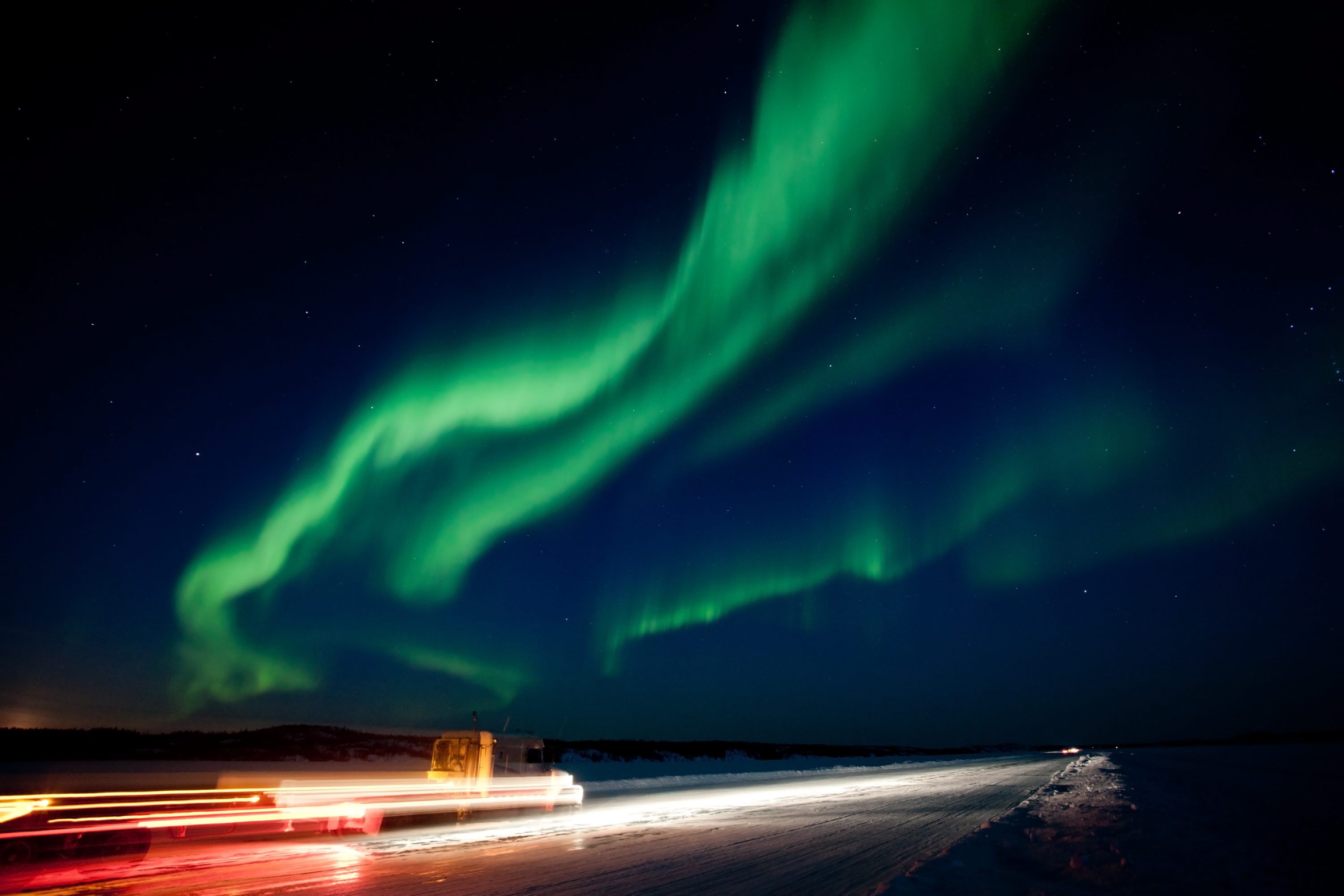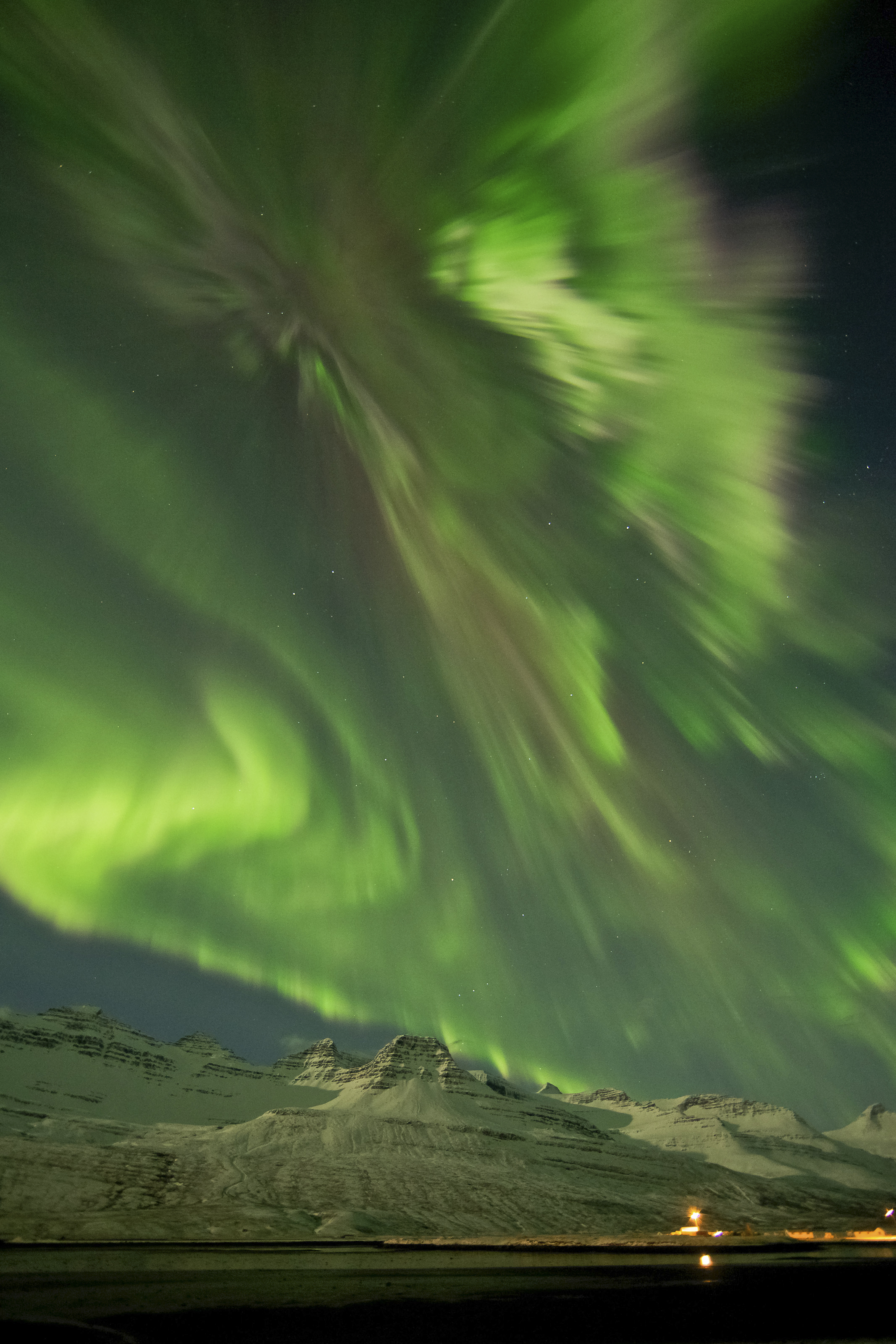 The largest solar storm in five years sent a huge wave of radiation into earth's atmosphere creating a brilliant show of the aurora borealis near Yellowknife, North West Territories on Thursday March 8, 2012. Yellowknife, which is situated directly under the auroral "oval", has some of the best northern lights viewing in the world. Truckers returning from the diamond mines 330 kilometers northeast enjoy the nighttime spectacle as they cruised down the ice road on Prosperous Lake. (AP Photo/The Canadian Press, Bill Braden)
The largest solar storm in five years sent a huge wave of radiation into earth's atmosphere creating a brilliant show of the aurora borealis near Yellowknife, North West Territories on Thursday March 8, 2012. Yellowknife, which is situated directly under the auroral "oval", has some of the best northern lights viewing in the world. Truckers returning from the diamond mines 330 kilometers northeast enjoy the nighttime spectacle as they cruised down the ice road on Prosperous Lake. (AP Photo/The Canadian Press, Bill Braden)SETH BORENSTEIN, AP Science Writer
 The Northern Lights are seen in the skies near Faskusfjordur on the east coast of Iceland Thursday March 8, 2012. A solar storm shook the Earth's magnetic field early today, but scientists said they had no reports of any problems with electrical systems. After reports Thursday of the storm fizzling out, a surge of activity prompted space weather forecasters to issue alerts about changes in the magnetic field. (AP Photo/Jonina Oskardottir)
The Northern Lights are seen in the skies near Faskusfjordur on the east coast of Iceland Thursday March 8, 2012. A solar storm shook the Earth's magnetic field early today, but scientists said they had no reports of any problems with electrical systems. After reports Thursday of the storm fizzling out, a surge of activity prompted space weather forecasters to issue alerts about changes in the magnetic field. (AP Photo/Jonina Oskardottir)WASHINGTON (AP) - The solar storm that seemed to be more fizzle than fury got much stronger early Friday before fading again.
At its peak, it was the most potent solar storm since 2004, space weather forecasters said.
No power outages or other technological disturbances were reported from the solar storm that started to peter out late Friday morning.
Solar storms, which can't hurt people, can disturb electric grids, GPS systems, and satellites. They can also spread colorful Northern Lights further south than usual, as the latest storm did early Friday.
And more storms are coming. The federal government's Space Weather Prediction Center says the same area of the sun erupted again Thursday night, with a milder storm expected to reach Earth early Sunday.
The latest storm started with a flare on Tuesday, and had been forecast to be strong and direct, with one scientist predicting it would blast Earth directly like a punch in the nose. But it arrived Thursday morning at mild levels - at the bottom of the government's 1-5 scale of severity. It strengthened to a level 3 for several hours early Friday as the storm neared its end. Scientists say that's because the magnetic part of the storm flipped direction.
"We were watching the boxer, expecting the punch. It didn't come," said physicist Terry Onsager at the National Oceanic and Atmospheric Administration's space weather center in Boulder, Colo. "It hit us with the back of the hand as it was retreating."
Forecasters can predict a solar storm's speed and strength, but not the direction of its magnetic field. If it is northward, like Earth's, the jolt of energy flows harmlessly around the planet, Onsager said. A southerly direction can cause power outages and other problems.
Thursday's storm came in northerly, but early Friday switched to the fierce southerly direction. The magnetic part of the storm spent several hours at that strong level, so combined with strong radiation and radio levels, it turned out to be the strongest solar storm since November 2004, said NOAA lead forecaster Bob Rutledge.
During that time - around 2 a.m. EST - forecasters expanded the area that could see the Northern Lights. They said it was possible to see the shimmering colorful auroras as far as south as Iowa and Pennsylvania.
"Up north, they got a great display," said NASA solar physicist David Hathaway.
By late Friday morning the storm was essentially over, forecasters said. But they had a new flare from the same sunspot region to watch. Preliminary forecasts show it to be slightly weaker than the one that just hit, arriving somewhere around 1 a.m. EST Sunday.
The storms are part of the sun's normal 11-year cycle, which is supposed to reach a peak next year.
"This is what we're expecting as we approach solar maximum,"" Onsager said. "We should be seeing this for the next few years now."
